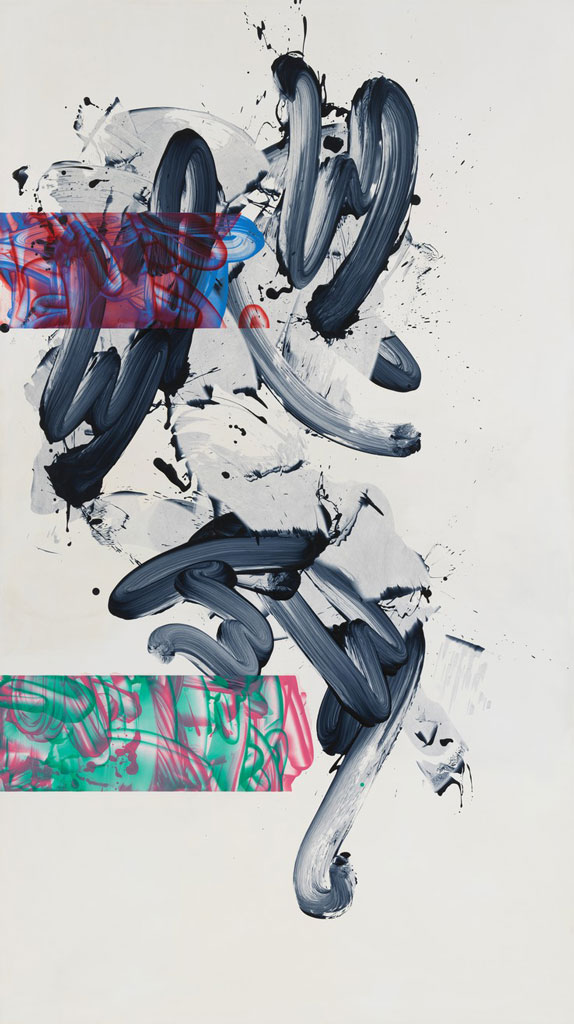ART-PRESENTATION: David Reed-New Paintings
 David Reed’s paintings often involve a long and complex technical process, combining traditional painting techniques with the use of laser cut stencils that are produced using digital image processing. Reed’s paintings are the result of the artist’s interest in and extensive knowledge of the history of European and American painting, ranging from the Italian Renaissance and European Baroque to American Pop Art, Photorealism, Minimalism, and Abstract Expressionism
David Reed’s paintings often involve a long and complex technical process, combining traditional painting techniques with the use of laser cut stencils that are produced using digital image processing. Reed’s paintings are the result of the artist’s interest in and extensive knowledge of the history of European and American painting, ranging from the Italian Renaissance and European Baroque to American Pop Art, Photorealism, Minimalism, and Abstract Expressionism
By Dimitris Lempesis
Photo: Gagosian Archive

Since the outset of his career, David Reed’s central preoccupation has been to challenge and reinvent how to make a painting. Consistently, his paintings present a compelling tension between the gestural and the impersonal; in recent times this has been characterized by fluid, torquing, extended marks that reveal the viscosity of paint and the speed of color and light in a flattened manner that looks photographic or filmic. The outsize works in David Reed’s solo exhibition “New Paintings” at Gagosian Gallery, some over a decade in the making, respond to the gallery’s space, testing and maximizing their spatial boundaries. Indexically numbered rather than titled, the works are painted in either intense, otherworldly colors or primarily blacks and grays, as if contrasting the delirious possibilities of the full-color moving image with the austerity of black, white, and gray. Throughout, disruptive elements appear to arrest what reads as movement, as though “pauses” are taking place. In “#713” (2017-19), these pauses take the form of parallel vertical lines that divide the painting into four equal squares, while in “#712” (2010-11/2018-19), they manifest as two horizontal bands filled with small looping strokes in bright, layered glazes that contrast with the larger, swirling brushmarks. Reed has long been enamored of historical techniques and palettes; for these new paintings, he employs cangiante, a Renaissance technique of modeling with hue rather than value. The works’ smooth grounds are built up and carved into using a variety of seemingly spontaneous but often highly manipulated gestures. These compressed gestures create a visual tension within the paintings’ structures, and it is within these tensions that meaning resides. When David Reed came to New York from Southern California in the 1960s, he entered an art scene skeptical about painting’s ability to be progressive. The young artist sympathized with the humanist, even metaphysical impulse in the work of painters such as his teachers Philip Guston and Milton Resnick, even as he admired the deadpan materiality of contemporaneous conceptual experiments in sculpture and film. Seeking to make paintings that were as direct as a poured steel sculpture, between and he prepared tall vertical canvases, either as single panels or as several panels bolted together; their height was determined by the door to his studio, their width by the limits of his own reach. Working wet into wet, Reed painted primarily black or red strokes from left to right, top to bottom, and sometimes diagonally, quickly filling the canvas. Since that time, Reed has offered a vibrant discourse in thought and act, embracing a wide range of topics from Baroque painting theory to Abstract Expressionism. Though resolutely abstract, elements of his paintings—the long horizontal canvases, elongated forms, and lateral movements— bring to mind filmic techniques and motifs; taking the painted surface right to the edges of the canvas mimics the celluloid strip; shifts in scale evoke zoom and pan; and inserted sections, including stencils of brushmarks sourced from earlier works, function as jump cuts or flashbacks. As it was for the Pop artists before him, cinema is important to Reed’s thinking and process, though, crucially, not in terms of its iconography, but in the less literal forms of light, color, and structure, while still examining how screens, images, and media inflect our experiences and permeate our memories.
Info: Gagosian Gallery, 980 Madison Avenue, New York, Duration: 10/1-22/2/20, Days & Hours: Mon-Sat 10:00-18:00, https://gagosian.com


